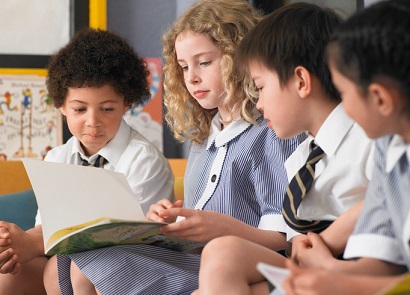
Ranked number 4 in The Top 30 Global Gurus in Education, Dr Barbara Blackburn has dedicated her life to raising the level of rigor and motivation for professional educators and students alike.
Internationally known for her inspirational, dynamic and interactive style, Blackburn is a teacher, a leader, and a university professor responsible for graduate training for educators.
Together with the Australian Council for Educational Leaders (ACEL), Blackburn will soon hold three webinars – on June 26, July 3 and July 10 – to highlight the understanding and implementation of rigor in a practical, concise and interactive format.
Below, Blackburn tells The Educator about how rigor can be leveraged by teachers and principals in multiple ways within an educational setting.
TE: What can you tell us about the role, and effects of, rigor in the classroom?
BB: Rigor is often misunderstood as simply doing "more" work, and it is really about having high expectations, providing support so students can learn, and providing opportunities for them to show they understand the material at high levels. If we want students to thrive, and to be prepared for life after school, whether that is work, university, or something else, rigorous should be infused into all aspects of the classroom.
TE: How can principals’ leadership strategies be used to improve rigor?
BB: Leaders set the tone for all classrooms. It's critical that they model their own expectations for rigor, provide appropriate training and support, observe what teachers are doing, coach them to improve their efforts, and recognize what teachers are doing well. These efforts take time and focus, and should be ongoing, since school improvement is a long-term process.
TE: What are specific strategies that leaders can use to shape school culture and build ownership and vision?
BB: First, it's important to build ownership and a shared vision, rather than simply telling teachers what to do. I recommend using the concept of a hot air balloon. Ask teachers to imagine they are in a hot air balloon hovering over the school--what do they see and hear in the current school about instruction? Next, imagine you are in the balloon in five year. Our school has increased rigor and students are thriving and working at higher levels. What do we see and hear now? Then, discuss the responses with teachers to develop a shared vision for improvement.
For culture, I share a simple idea with leaders, that of recognizing and highlighting positive efforts related to rigor, in the hopes that the examples will spark ideas in other teachers and build momentum. In "Name It, Claim It, and Explain It", leaders start a meeting by showing a picture or a video on the screen that highlights an example of rigor they have observed. The leader then asks the teacher to "name it, claim it, and explain it" (warn the teacher ahead of time so they are not surprised!). This highlights best practices and good teaching.
TE: What are simple ways that school leaders can improve the rigor of assessments?
BB: Start by using a standard criteria for rigor and evaluate current assessments using the criteria. One that I recommend is Webb's Depth of Knowledge. It's clear, and allows teachers and leaders to assess and improve current assessments, as well as developing new ones. For more traditional assessments, there are easy steps to follow. For true-false tests, ask students to correct any false statements. For matching, use three columns rather than two. Simple adjustments can increase the rigor of what teachers are doing in the classroom.


